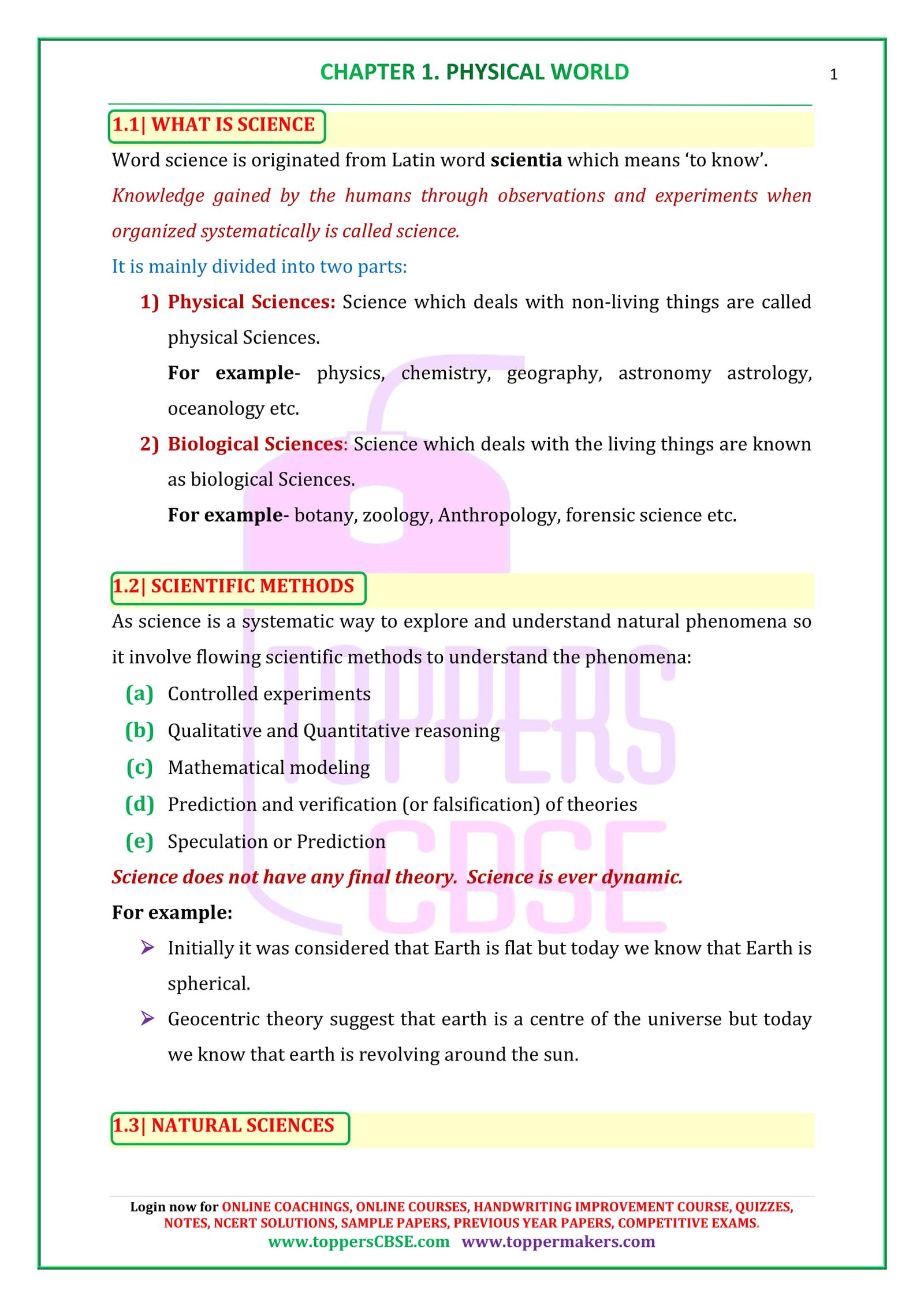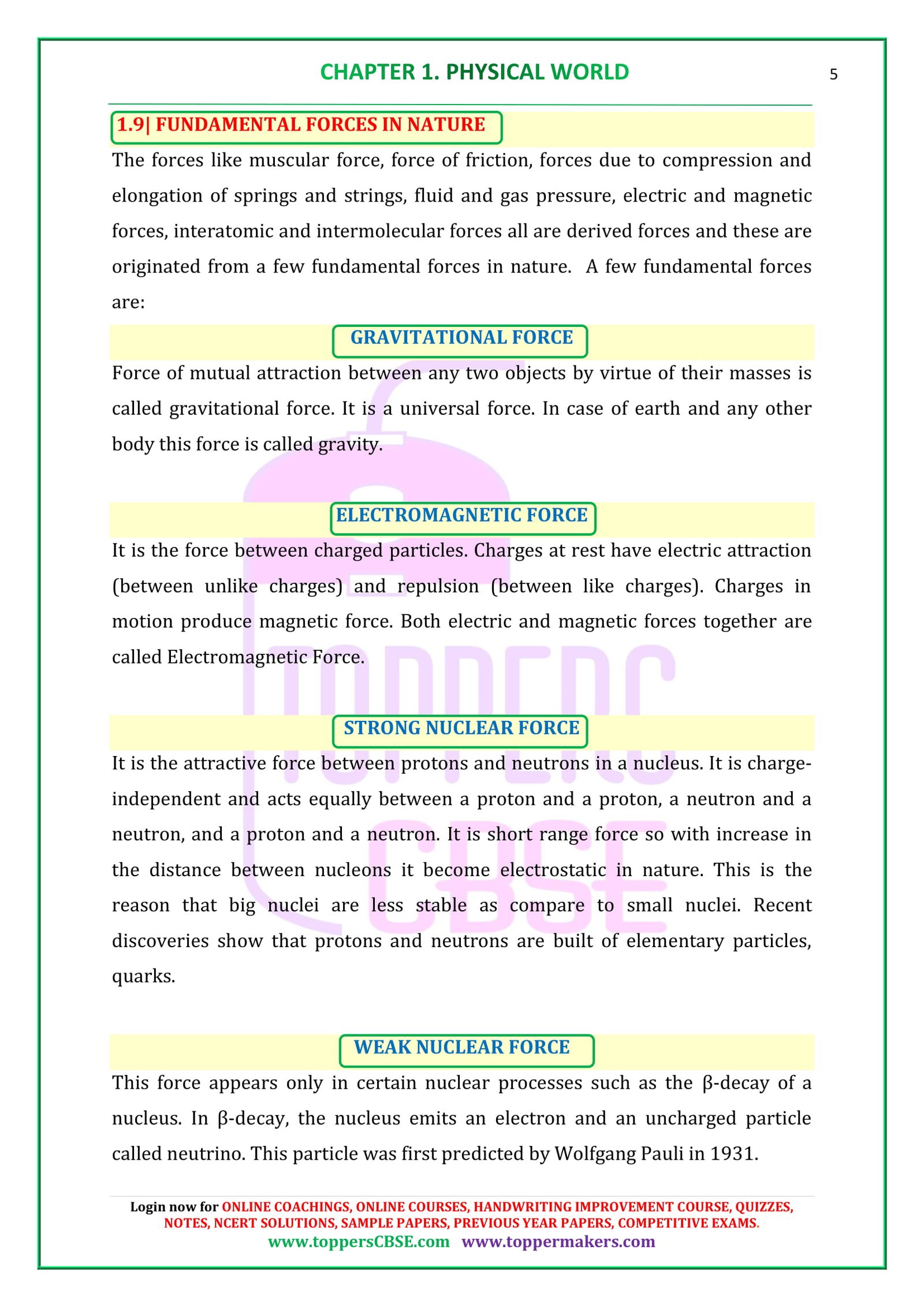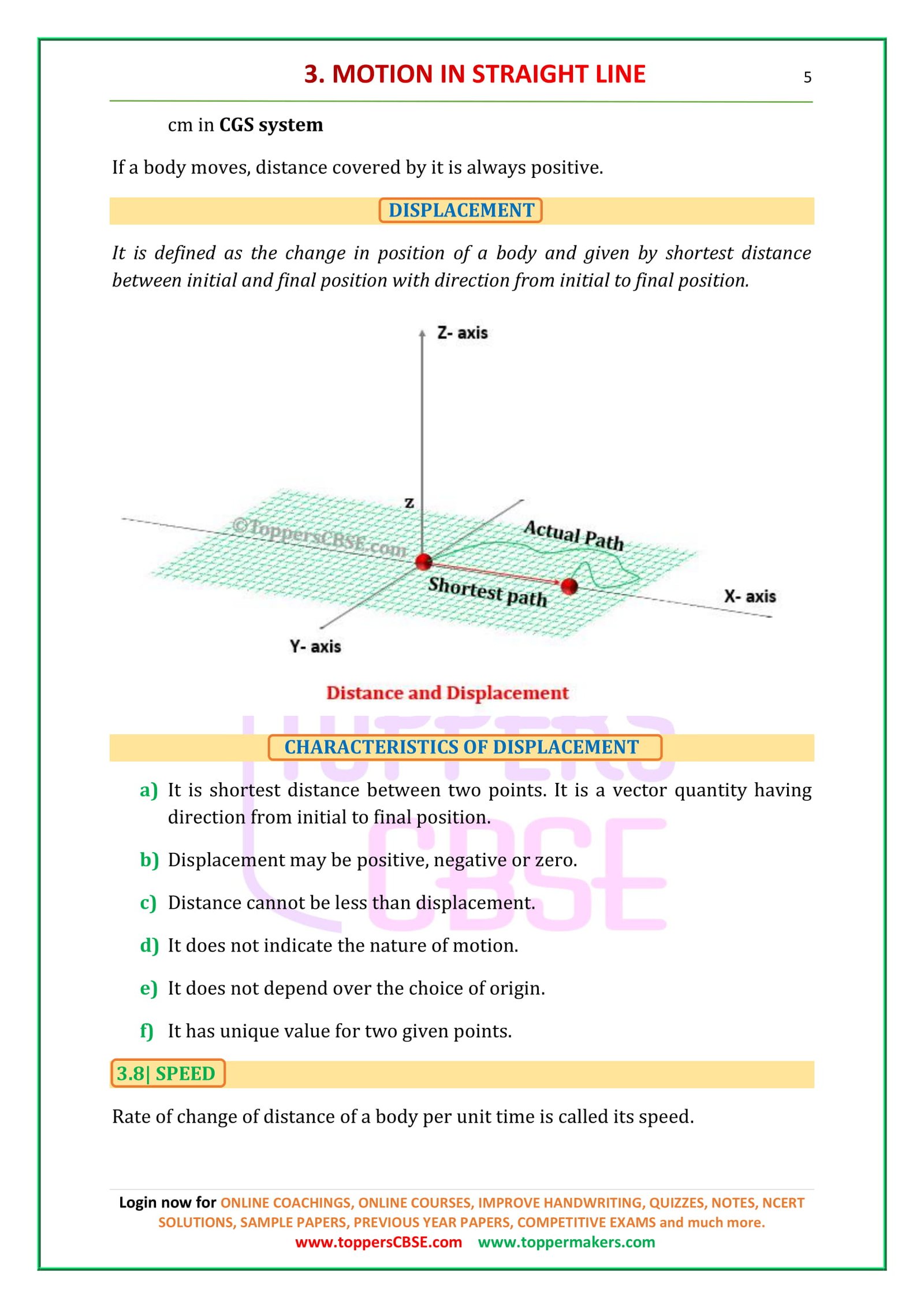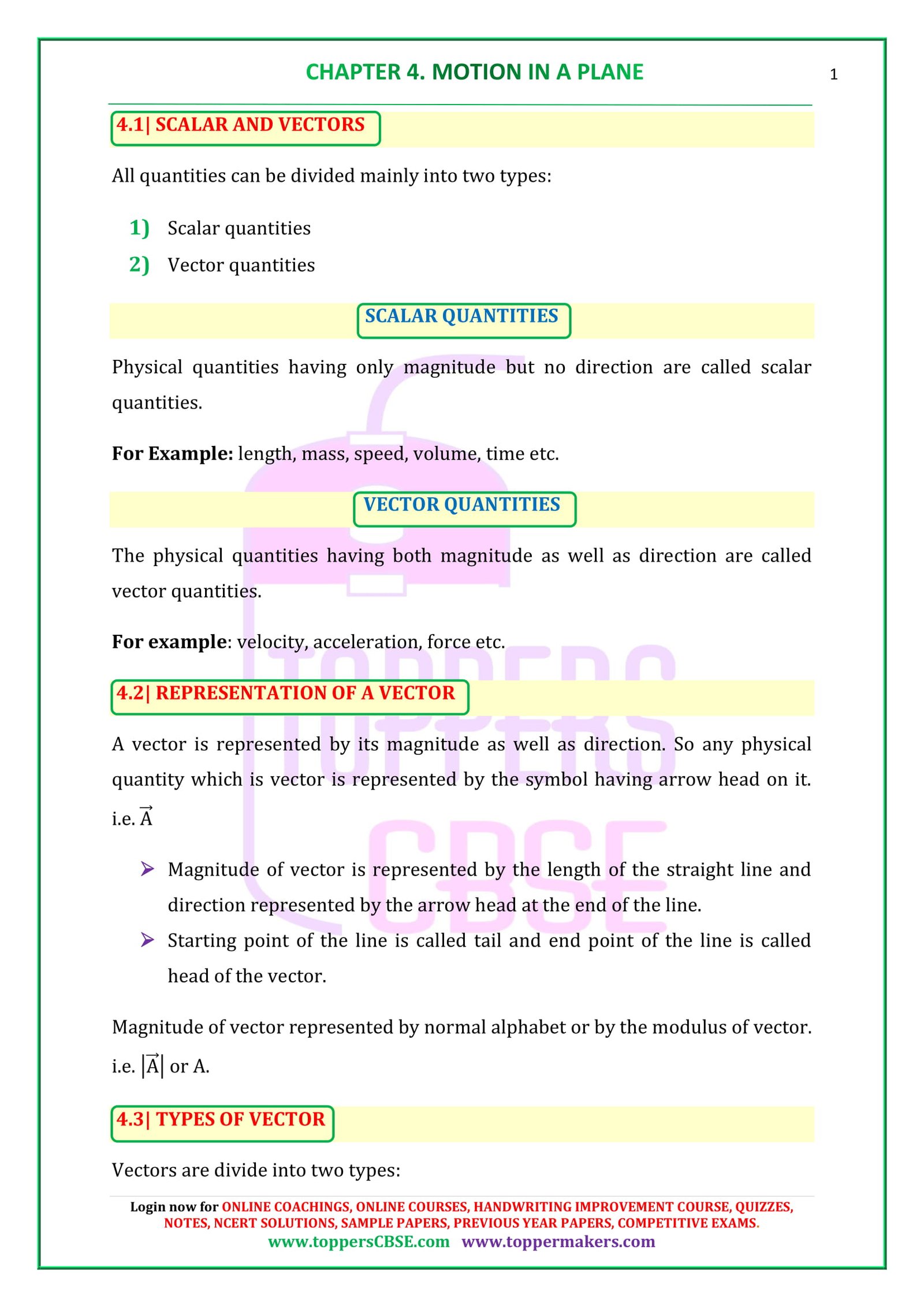CLASS 11 PHYSICS HANDWRITTEN NOTES
Class 11 Physics Handwritten Notes with derivations are prepared by our team members by keeping latest syllabus and exam pattern in mind. ToppersCBSE, a team of experienced staff with vast knowledge is providing best ever Class 11 Physics Handwritten Notes. Apart from this, Class 11 Physics Handwritten Notes with derivations are prepared with neat and clean handwriting. We have both printed notes and handwritten notes for Class 11 physics and other subjects.
Note: Our Handwritten notes are now Computerized. So we provide Only Computerized Notes and Demo pages are Shown below.
Our Class 11 Physics Handwritten Notes with derivations contain very easy language so that even a weak student can understand these very easily. As we knew that physics require crystal clear logic and reasons to understand any concept. Our Class 11 Physics Handwritten Notes fulfill all requirements that student needs to achieve their goal of getting maximum marks in their exams. Class 11 Physics Handwritten Notes (NCERT Solutions Only) with derivations are available to download in PDF also. Class 11 Physics Handwritten Notes are available in printed format only. ToppersCBSE is always ready to help the students to achieve their goals. At present we are providing notes of science stream for subjects Physics, Chemistry, Mathematics and Biology.
At present Class 11 Physics Handwritten Notes are provided as per NCERT pattern. We are working on further advance topics for competitions like IIT, NEET etc. We will update with our advance content soon. CBSE Class 11 handwritten Notes for physics are very nice notes for students of Class 11 for all boards. We are sure that no one will find such a wonderful notes of Class 11 physics anywhere on the internet.
Although we have taken much care while preparing notes for Class 11 physics but still we are improving these notes for physics Class 11.
Physics handwritten Notes for CBSE Class 11 : Features
- With very easy language and unique methods of derivations.
- Topics are as per syllabus so that students can revise subject in minimum time with maximum accuracy.
- CBSE class 11 handwritten Physics Notes are as per guidelines of ncert syllabus.
- After reading CBSE class notes students will not get panic by huge books. After that students also can read any other books with better understanding.
Class 11 handwritten Physics Notes for CBSE: Chapter-wise
- Chapter 1. Physical World
- Chapter 2. Units and Measurements
- Chapter 3. Motion in Straight Line
- Chapter 4. Motion in a Plane
- Chapter 5. Laws of Motion
- Chapter 6. Work, Energy and Power
- Chapter 7. System of Particles and Rotational Motion
- Chapter 8. Gravitation
- Chapter 9. Mechanical Properties of Solids
- Chapter 10. Mechanical Properties of Fluids
- Chapter 11. Thermal Properties of Matter
- Chapter 12. Thermodynamics
- Chapter 13. Kinetic Theory of Gases
- Chapter 14. Oscillations
- Chapter 15. Waves




Buy notes of Class 11 Physics. We will send printed notes by Speed Post. Online quizzes are also accessible to registered users only.
 Buy Physics Notes Class 11 BIG DISCOUNT
Buy Physics Notes Class 11 BIG DISCOUNT
Class 11 Physics printed notes will be send in Printed form through Speed Post!
ToppersCBSE is always ready to help the students to achieve their goals. At present we are providing notes of science stream for subjects Physics, Chemistry, Mathematics and Biology. In case of any inquiry or suggestion we welcomes you to contact us anytime. So register us now! Our online quizzes and assignments can be accessed by registered users. These are provided free of cost.
Class 11 handwritten Physics Notes with derivations
Class 11 Physics Printed Notes Chapter 1. Physical World
What Is Science, Scientific Methods, Natural Sciences , Physics , Two Principal Types of Approaches In Physics, Scope of Physics, Classical Physics and Macroscopic Domain , Mechanics, Electrodynamics, Optics, Thermodynamics, Factors Responsible For Progress of Physics , Hypothesis, Axiom and Models, Technological Applications of Physics , Fundamental Forces In Nature , Gravitational Force, Electromagnetic Force, Strong Nuclear Force, Weak Nuclear Force, Comparision Between Different Fundamental Forces
Class 11 Physics printed Notes Chapter 2. Units and Measurements
Physical Quantity, Representation of Physical Quantity, Characteristics of a Unit, Fundamental Quantities, Derived Quantities, Systems of Units, SI System of Units, Fundamentals Units, Supplementary Units, Measurement of Length, Astronomical Unit (Au), Light Year, Parsec, Indirect Method To Mesurement of Large Or Small Distances, Parallax Method, Measurment of Molecule Size: Size of Oleic Acid Molecule, Coherent System of Units, Advantages of Si System, Order of Magnitude, Dimensions and Dimensional Formulae, Dimensional Formula of Some Physical Quantities, Four Types of Quantities, Dimensional Equations, Applications of Dimensional Equations, Conversion of One System of Unit Into Another System, Checking The Accuracy of Various Formulae, Derivation of Formulae, Limitations of Dimensional Analysis, Significant Figures, Rules For Finding Significant Figures, Significant Figures In Algebric Operations, Addition Or Subtraction, Multiplication Or Division, Rules of Rounding off Significant Figures, Error, Absolute Error, Mean Absolute Error, Relative Error, Percentage Error, Propagation of Error, Error In Addition Or Subtraction, Error In Multiplication Or Division, Error In Measured Quantity Raised To Power
Class 11 Physics Printed Notes Chapter 3. Motion in Straight Line
Mechanics, Branches of Mechanics, Rest and Motion, Rest and Motion Are Relative Terms, Types of Motion , Concept of Point Mass Object , Motion In One Dimension, Two Dimensions Or Three Dimensions, Physical Quantities, Distance and Displacement, Displacement, Characteristics of Displacement, Speed , Types of Speed, Velocity, Type of Velocity, Formula For Uniform Motion, Graphical Representation , Relative Velocity , Expression For Relative Velocity, Determination of Relative Velocity, Uniformly Accelerated Motion, Acceleration, Uniformly Accelerated Motion (Equations of Motion), Proof of Equations of Motion With The Help of Graph, Proof of Equations of Motion With Calculas Method
Class 11 Physics Notes Chapter 4. Motion in a Plane
Scalar and Vectors, Scalar Quantities, Vector Quantities, Representation of A Vector, Polar Vectors, Axial Vectors, Position and Displacement Vector, Position Vector, Displacement Vector, Some Important Types of Polar Vectors , Multiplication of A Vector By A Real Number, Multiplication of A Vector By A Scalar, Resultant Vector, Addition and Subtraction of Vectors, Addition of Two Vectors Acting In Different Direction, Triangle Law of Vector Addition, Analytical Method To Determine Resultant Vector, Parallelogram Law of Vector Addition, Polygon Law of Vector Addition, Properties of Vector Addition, Condition For Zero Resultant Vector, Crossing River By A Boat, Crossing River Along Shortest Path, Crossing River In Shortest Time, Projectile, Types of Projectiles, Horizontal Projectile, Nature of Path of Projectile, Time of Flight, Horizontal Range, Resultant Velocity, Inclined Projectile Or Angular Projectile, Nature of The Path, Maximum Height, Time of Flight, Horizontal Range, Two Angles Projection For Same Horizontal Range, Resultant Velocity of Projectile At Any Time
Class 11 Physics Notes Chapter 5. Laws of Motion
Force, Newton’s Laws of Motion, Newton’s First Law of Motion , Inertia , Inertia of Rest, Inertia of Motion, Inertia of Direction, Linear Momentum, Newton’s Second Law of Motion, Practical Applications of Newton’s 2nd Law of Motion, Units of Force , Absolute Units of Force, Gravitational Units of Force, Newton’s Third Law of Motion, Some Applications of Newton Third Law, Law of Conservation of Momentum, Applications of Law of Conservation of Momentum, Newton’s Second Law of Motion Is Real Law of Motion, Newton’s First Law From Second Law, Newton’s Third Law From Second Law Impulse, Apparent Weight of A Person In A Lift, Problem of Mass and Pulley, Friction, Origin of Sliding Friction- Old View, Limitations of Old View, Origin of Sliding Friction- Modern View, Sliding Friction Is of Three Types, Variation of Force of Friction With Applied Force, Kinetic Friction Is of Two Types, Rolling Friction, Cause of Rolling Friction, Static Friction Is A Self-Adjusting Friction, Laws of Limiting Friction, Coefficient of Friction, Angle of Friction, Relation Between and Coefficient of Limiting Friction, Angle of Repose Or Angle of Sliding, Acceleration of A Body Down A Rough Inclined Plane, Worker Done In Moving A Body Up A Rough Inclined Plane, Motion On A Level Road , Banking of Roads, Bending of A Cyclist, Motion In A Vertical Circle, Application of Motion In A Vertical Circle
Class 11 Physics Notes Chapter 6. Work, Energy and Power
Work, Types of Work, Units of Work, Relation Between Joule and Erg, Work Energy Theorem, Work Done By Variable Force, Conservative and Non-Conservative Forces, Power, Units and Dimensional Formula of Power, Energy, Mechanical Energy, Kinetic Energy, Expression For Kinetic Energy, Potential Energy, Expression For Gravitational Potential Energy, Expression For Potential Energy of A Spring, Law of Conservation of Mechanical Energy, Conservation of M.E. of A Freely Falling Body Under Gravity, Mass-Energy Equivalence, Collisions, Coefficient of Restitution Or Resilience, Elastic Collision – One Dimensional Or Head-On Collision, Determination of Velocity After Collision, Elastic Collision – Two Dimensional Or Oblique Collisions, Inelastic Collision – One Dimensional, Inelastic Collision – Two Dimensional
Class 11 Physics Notes Chapter 7. System of Particles and Rotational Motion
Centre of Mass, Centre of Mass of Two Particle System, Cm For N Particle System, Centre of Mass of Various Objects, Characteristics of Centre of Mass, Rigid Body, Translatory Motion, Rotatory Motion, Torque, Cartesian Form of Torque, Polar Form of Torque, Physical Significance of Torque, Angular Momentum, Cartesian Form of Angular Momentum, Polar Form of Angular Momentum, Relation Between Torque and Angular Momentum, Geometrical Meaning of Angular Momentum, Principle of Conservation of Angular Momentum, Moment of Inertia of Rigid Body, Physical Significance of Moment of Inertia, Radius of Gyration, Theorems On Moment of Inertia, Theorem of Parallel Axis, Theorem of Perpendicular Axes, Kinetic Energy of Rotation, Moment of Inertia of Circular Ring, Mi About An Axis ⊥ To The Plane and Passing Through Its Centre, Moment of Inertia About Any Diameter of The Ring, Moment of Inertia About A Tangent In The Plane of The Ring, Mi About A Tangent Perpendicular To The Plane of The Ring, Moment of Inertia of A Uniform Circular Disc, Mi About An Axis ⊥ To The Plane and Passing Through The Centre, Moment of Inertia of Disc About Any Diameter, Moment of Inertia About A Tangent In The Plane of The Disc, Moment of Inertia About A Tangent ⊥ To The Plane of The Disc, Moment of Inertia of A Uniform Rod, Mi About An Axis Passing Through Its Centre and ⊥ To Its Length, Mi About An Axis ⊥ To Its Length and Passing Through Its One End, Relation Between Angular Momentum and Torque, Rolling Motion of An Object, Rolling Motion of A Body On Inclined Plane (Relation Between Acceleration and Moment of Inertia)
Class 11 Physics Notes Chapter 8. Gravitation
Gravitation, Newton’s Law of Gravitation, Define G, Vector Form of Newton’s Law of Gravitation, Gravity, Acceleration Due To Gravity,Relation Between g and G, Application of Newton’s Law of Gravitation, Variation of Acceleration Due To Gravity, Gravitational Field, Intensity of Gravitational Field, Gravitational Potential, Expression For Gravitational Potential At a Point, Gravitational Potential Energy, Expression For Gravitational Potential Energy At A Point, Gravitational Potential Energy Near The Surface of Earth, Orbital Velocity, Time Period and Height of The Satellite, Orbital Velocity For Satellite Near The Surface of Earth, Time Period of Satellite, Height of The Satellite, Geostationary Or Geo Synchronous Satellite, Orbital Velocity of Geostationary Satellite, Escape Velocity, Gravitational Pull of Earth and Never Return On Earth, Expression For Escape Velocity, Theory of Planetary Motion, Kepler’s Laws of Planetary Motion
Class 11 Physics Notes Chapter 10. Mechanical Properties of Solids
Some Terms, Rigid Body, Elasticity, Deforming Force, Perfectly Elastic Body, Plastic Body, Stress, Types of Stress, Strain, Types of Strain, Elastic Limit, Hooke’s Law, Modulus of Elasticity, Types of Modulus of Elasticity, Young Modulus of Elasticity (Y), Important Questions, Bulk Modules of Elasticity, Compressibility, Modulus of Rigidity Or Shearing Modulus of Elasticity (G), Elastic After Effect , Elastic Fatigue, Elastic Potential Energy In A Wire, Stress- Strain Relationship In A Wire, Classification of Materials From Above Graph, Poisson’s Ratio (Σ), Effect of Compression On The Density of Liquid, Applications of Elasticity
Class 11 Physics Notes Chapter 11. Mechanical Properties of Fluids
Some Terms, Liquid In Equilibrium, Pressure, Applications of Pressure, Density, Relative Density, Variation of Pressure With Depth, Hydrostatic Paradox, Pascal’s Law, Application For Pascal’s Law, Atmospheric Pressure, Buoyancy, Archimede’s Principle, Law of Flotation, Measurements of Pressure Difference, Intermolecular Force, Intermolecular Binding Energy of Liquid , Molecular Range , Sphere of Influence, Surface Film, Surface Tension, Important Questions, Surface Energy, Excess of Pressure Inside A Liquid Drop, Excess of Pressure Inside An Air Bubble In A Liquid, Excess of Pressure Inside A Soap Bubble, Variation In Surface Tension, Angle of Contact, Capillarity, Rise of Liquid In A Capillary Tube (Ascent Formula), Calculation of R, Rise of Liquid In A Tube of Insufficient Length, Radius of New Bubble When Two Soap Bubbles Coalesce, Hydrodynamics, Viscosity , Coefficient of Viscosity, Difference Between Viscosity and Solid Friction, Poiseuille’s Formula, Derivation of Poiseuille’s Formula (Using Dimensional Method), Stoke’s Law, Derivation of Stoke’s Law By Method of Dimensions, Terminal Velocity, Streamline Flow, Laminar Flow, Turbulent Flow, Critical Velocity, Reynold’s Number , Physical Significance of Reynold’s Number, Equation of Continuity, Energy of A Liquid, Bernoulli’s Theorem , Application of Bernoulli’s Theorem, Torricelli’s Theorem, Blowing off The Roof During Strom
Class 11 Physics Notes Chapter 12. Thermodynamics
Heat, Molecular Motion, Temperature , Celsius Temperature Scale, Fahrenheit Temperature Scale Kelvin Scale, Absolute Temperature Scale (Kelvin Scale), Relation Between Different Scales of Temperature, Thermal Expansion, Linear Expansion, Area Expansion, Volume Expansion, Relation Betweenα, β and γ, Relation Between α and β, Relation Between α and γ, Effect of Temperature On Density of Solid, Expansion of Liquid, Anomalous Behaviour of Water On Expansion, Specific Heat Capacity Or Heat Capacity, Molar Heat Capacity, Heat Capacity Or Thermal Capacity , Water Equivalent, Specific Heat of A Gas, Expansion of Gas, Two Principal Specific Heat of Gas, Heat Capacity of A Gas At Constant Volume, Heat Capacity of A Gas At Constant Pressure, Cp Greater Than Cv, Change of State, Discussion of Graph, Pressure-Temperature Diagram, Latent Heat, Calorimetry, Transfer of Heat, Conduction, Convection, Radiation Method, Thermal Conductivity, Coefficient of Thermal Conductivity of Solid, Thermal Radiation, Basic Property of Thermal Radiation, Newton`S Law of Cooling, Expression, Reflectance, Absorbtance, and Transmittance, Expression, Perfectly Black Body, Wien’s Displacement Law, Stefan’s Law, Monochromatic Emittance, Total Emittance Or Emissive Power, Emissivity (ϵ), Monochromatic Absorbtance (Aλ), Kirchhoff’s Law
Class 11 Physics Notes Chapter 13. Kinetic Theory of Gases
Thermodynamics, Some Important Basic Terms, Thermodynamic Equilibrium, Thermodynamic System, Adiabatic Wall, Diathermic Wall, Heat, Internal Energy, Thermodynamic State Variable, Zeroth Law of Thermodynamics, Equation of State, Thermodynamic Process, Isothermal Change/ Operation, Essential (Necessary) Condition, Isothermal Curve, Adiabatic Change Or Operation, Essential Condition For Adiabatic Change, Equation of State For Adiabatic Change, Adiabatic Curve, Work Done In An Isothermal Expansion, Work Done In An Adiabatic Expansion, Slopes of Isothermal and Adiabatic Process, Graph For Both Types of Expansion and Compression, Comparison Between Isothermal and Adiabatic Change, Work Done In Terms of Indicator Diagram, First Law of Thermodynamics, Application of Thermodynamics , Isothermal Process, Adiabatic Process, Isochoric Process, Relation B/W Two Principle Specific Heat of Gas (Mayer’s Formula), Melting Process, Boiling Process, Cv and Cp For A Mixture of Gases, Limitation of First Law, Cyclic and Non-Cyclic Process, Heat Engine, Efficiency, Types of Heat Engine, Refrigerator and Its Principle, Coefficient of Performance, Relation Between Β and Η, 2nd Law of Thermodynamics, Reversible and Irreversible Process , Carnot Heat Engine, Prove That Q_2/Q_1 =T_2/T_1 In A Carnot Heat Engine, Carnot Theorem
Class 11 Physics Notes Chapter 14. Oscillations
Ideal Gas Or Perfect Gas, Characteristics, Assumptions of Kinetic Theory of Gas, Avogadro Hypothesis, Uses of Avogadro Number, Pressure Exerted By A Gas, Relation Between Kinetic Energy and Pressure , Average Kinetic Energy Per Molecule of Gas, Kinetic Interpretation of Temperature, Derivation of Gas Laws From Kinetic Theory of Gas, Degree of Freedom, Law of Equipartition of Energy, Sp. Heat Capacity of Monatomic, Diatomic, Triatomic Gases, Specific Heat Capacity of Solid, Specific Heat Capacity of Water, Most Probable Speed, Mean Speed Or Average Speed, Root Mean Square Speed, Mean Free Path, Brownian Motion, Periodic Motion, Oscillatory Motion, Some Definitions, Harmonic Oscillations, Non–Harmonic Motion, Simple Harmonic Motion (SHM), Characteristics of SHM, Displacement, Velocity, Acceleration, Amplitude, Time Period, Energy In SHM, Potential Energy of Particle In SHM, Kinetic Energy of SHM, Examples of SHM, Simple Pendulum, Second Pendulum, Oscillation of A Liquid In U Shaped Tube, Oscillation of A Floating Cylinder, Oscillations of A Loaded Spring, Oscillations In Horizontal Spring, Oscillations In A Vertical Spring, Oscillations In Two Springs In Parallel Combination, Two Spring In Series Combination, Undamped and Damped Simple Harmonic Oscillation, Free, Forces and Resonant Oscillations
Class 11 Physics Notes Chapter 15. Waves
Wave Motion, Types of Waves, Mechanical Wave, Types of Mechanical Wave, Electromagnetic Wave, Matter Wave, Transverse Wave Motion, Longitudinal Wave Motion, Wave Function,Periodic Wave Function, Relation Between Velocity, Frequency and Wavelength, Equation of Plane Progressive Simple Harmonic Wave, Phase and Phase Difference, Phase Difference, Charectristics of Particle In Oscillations, Particle Velocity, Acceleration, Speed of Transverse Wave, Speed of Longitudinal Wave, Speed of Sound In Air, Newton’s Formula, Laplace Correction, Factor Affecting Velocity of Sound In Air, Effect of Pressure, Effect of Temperature, Effect of Humidity, Effect of Wind Velocity, Reflection From Rigid End, Reflection At Free End, Principle of Superposition of Waves, Stationary Waves Or Standing Waves, Types of Stationary Wave, Characteristics of Stationary Wave, Some Important Terms Related To Stationary Waves, Analytical Treatment of Stationary Wave, Formation of Harmonics In A String, First Mode of Vibration, Second Mode of Vibration, Third Mode of Vibration, Laws of Vibrations In Stretched String, Standing Wave In Closed Pipe, First Mode of Vibration, Second Mode of Vibration, Third Mode of Vibration, Standing Wave In Open Organ Pipes, First Mode of Vibration, Second Mode of Vibration, Third Mode of Vibration, Beats, Mathematical Treatment of Beats
